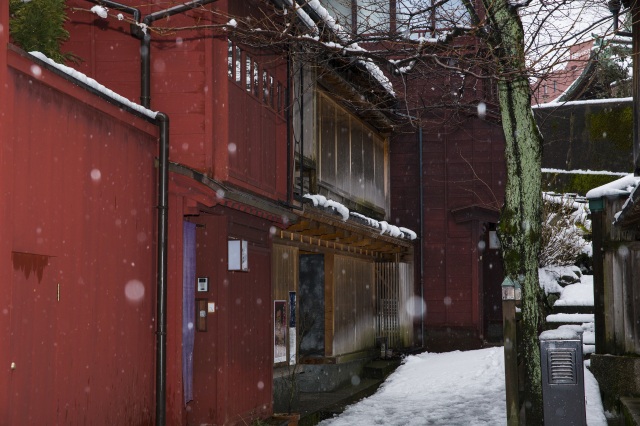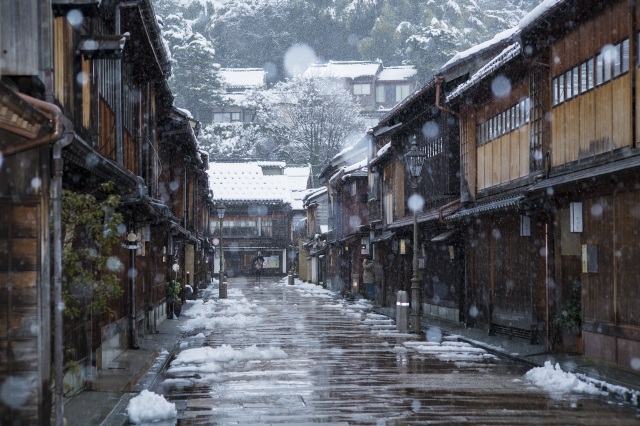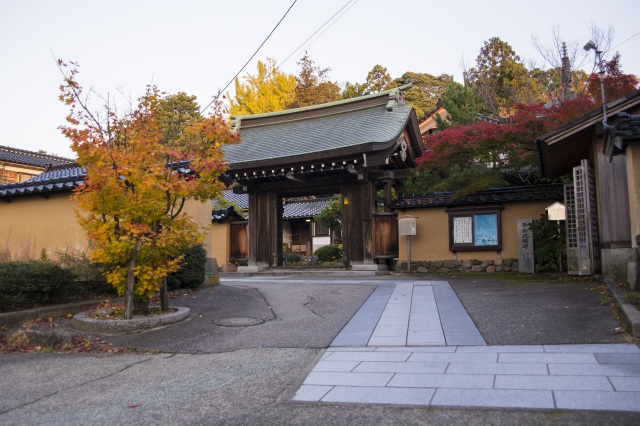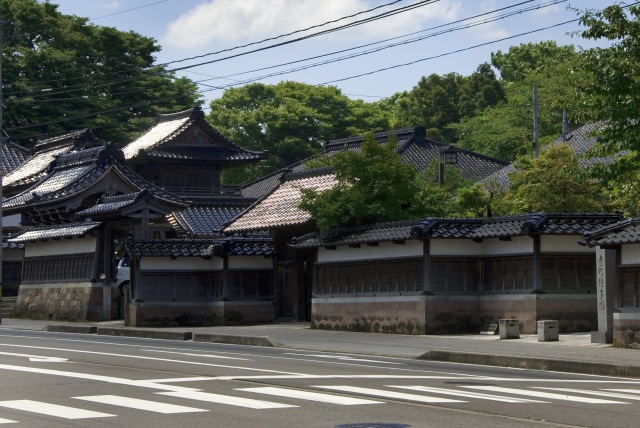Walks with Time - Explore the Beauty and Culture of Kanazawa Through Its Traditional Heritage Districts
In Kanazawa, you’ll find streets that echo the spirit of old Japan—where traditional architecture, historical charm, and cultural legacy still thrive.
These areas are officially designated as “Important Preservation Districts for Groups of Traditional Buildings”, a system created by the Japanese government to protect quarters of exceptional historical value.
From former post towns and merchant quarters to samurai residences and geisha districts, these are not just places to see—but places where the past is still alive.
As of April 2025, there are 129 such preservation districts across Japan, and Ishikawa Prefecture is home to the most— 8 in total.
Among them, 4 are located in Kanazawa City, making it one of Japan’s richest destinations for historical walking tours and cultural exploration.
Kanazawa’s preserved districts can be grouped into two main themes:
1. Temple and Shrine Area – Teramachi Temple Area & Utatsuyama Temple Area
Surrounding Kanazawa Castle, these temple areas were carefully planned by the ruling Maeda clan of the Kaga Domain during the early Edo period (1603–1868). Built partly for religious and partly for defensive purposes, the narrow alleyways and historical layout from the 17th century (specifically the period, 1615–1644) are still preserved.
2. The Chaya Districts – Higashi Chaya District & Kazue-machi Chaya District
Did you know that only three “chaya districts” in Japan are recognized as nationally preserved cultural areas—and two of them are right here in Kanazawa? These districts are known for their elegant townhouses (machiya), featuring: A first floor with wooden lattice fronts, A second floor with tall ceilings and tatami rooms for traditional performances by geisha (known as geigi in Kanazawa)
In Higashi Chaya District and Kazue-machi Chaya District , this unique form of architecture continues to shape the streetscape. During the day, visitors can wander through these scenic streets rich in history. At night, the gentle glow of lanterns transforms the area into a dreamlike world—where echoes of shamisen music still seem to linger.

Kazue-machi Chaya District
A Timeless Chaya District Along the Asano River
Nestled quietly along the Asano River in Kanazawa, Kazue-machi is a place where time seems to gently pause. Located near the historic Hokuriku Road, once a vital route connecting regions of northern Japan, this riverside district blends natural beauty with centuries of cultural tradition.
Though it is the smallest officially designated “Important Preservation District for Groups of Traditional Buildings” in Japan—measuring just 0.6 hectares—it holds great historical and cultural significance. As of April 2025, four traditional teahouses (chaya) are still in operation here, keeping the spirit of this once-flourishing entertainment district alive. These are not relics behind glass—they are living cultural heritage, where tradition continues in the present day.
Walking through the streets of Kazue-machi, you’ll notice the distinct features of chaya-style architecture—designed for refined gatherings of music, dance, and conversation.
The townhouses lining the street typically have:
- A ground floor with delicate wooden latticework (koushi), allowing glimpses of warm interior lighting while maintaining privacy
- A second floor with high ceilings, used for hosting performances and guests
- A third floor, added later in time to adapt to changing needs
Each building has its own charm, yet together they form a harmonious streetscape, perfectly in tune with the gentle flow of the Asano River. The scene resembles a painting scroll brought to life.
Wander just a few steps off the riverside path, and you'll discover a more secluded part of the district. Here, even older-style teahouses remain, quietly dignified and steeped in timeless grace.
This is also where you'll find Kuragarizaka (“Dark Alley”), a small, atmospheric slope once used by danna-shu—wealthy patrons of the arts who visited teahouses discreetly.
As you walk through the narrow lanes, you may feel a sense of quiet déjà vu—as if catching a fleeting glimpse of the refined world once known only to Kanazawa’s cultural elite.

Higashi Chaya District
Elegance Through the Ages – The History and Beauty of Higashi Chaya District
Set along the serene banks of the Asanogawa River in Kanazawa, Higashi Chaya District is a place where refined tradition and timeless beauty continue to flourish.
Its origins date back to 1820, during the late Edo period (1603–1868), when this area was bustling with travelers and merchants. The district served as a key junction between the castle town of the powerful Kaga Domain and the Hokuriku Road, a major route connecting northern Japan. It was also a popular path for pilgrims visiting the temples and shrines at the foot of nearby Utatsuyama Hill.
To manage the growing flow of people—and to maintain order and morality—the Kaga lords established a new, regulated entertainment district on the east side of the Asanogawa River. This became Higashi Chaya, complementing the earlier “Nishi Chaya” district to the west of the city.
The layout of Higashi Chaya District was carefully planned at its founding. It spans roughly 100 meters north to south and 180 meters east to west, and at its peak, it was home to around 90 teahouses. The entrances to the district were marked by timber gates, creating a clear boundary between everyday life and the refined world within.
What’s remarkable is that this original town layout still remains intact today. As of April 2025, four traditional teahouses are still in operation, offering a rare glimpse into the living culture of geisha entertainment in Japan.
Strolling through Higashi Chaya, you'll instantly recognize the elegant style of chaya architecture:
-A ground floor with closely spaced wooden latticework (koushi), which offers subtle glimpses inside while maintaining privacy
-A second floor with tall ceilings and broad windows, designed to host traditional performances by geisha
Unlike ordinary townhouses of the time—which had low ceilings and small, barred windows—the chaya were given special permission to include prominent tatami rooms on the second floor with extended verandas. This architectural style reflected the prestige and formality of the teahouse as a cultural space, where music, and dance were enjoyed in elegant company.
Interestingly, this design mirrors the traditional chaya architecture seen in Gion, Kyoto, making Higashi Chaya one of the few places where the essence of Japan’s refined hospitality culture can still be experienced today.

Utatsuyama Temple Area
A Quiet Passage Through Time — The Temple District Beneath Utatsuyama
Tucked quietly behind Kanazawa’s bustling Higashi Chaya District lies another preserved treasure:
the Utatsuyama Temple Area, one of Japan’s officially designated Important Preservation Districts for Groups of Traditional Buildings.
This sacred hillside neighborhood dates back to the early 1600s, during the transition from the period (1596–1624). At that time, the ruling Kaga Domain developed this area—alongside Teramachi and Kodatsuno—as part of a defensive network and a strategic oversight point for monitoring the influence of the Ikko sect of Buddhism.
From the old Hokuriku Road, gentle alleyways rise toward the mid-slopes of Utatsuyama, where today, around 50 temples and shrines still stand. Each one quietly tells its own story, reflecting centuries of spiritual, cultural, and political history in the region.
One of the most remarkable features of this area is its architectural consistency across different Buddhist sects—a rare sight in Japan.
Many temples adopt common styles such as:
- Gabled roofs (kirizuma-zukuri) with side-facing entrances, and
- The six-room hōjō layout, traditionally used for temple living quarters
This shared approach lends a distinctive sense of harmony to the entire streetscape. At the same time, temples with more elaborate elements—such as front-facing gabled roofs, intricate layered beams, and karahafu-style curved gables at the entrances—reveal a refined balance of formality and grace.
One of the most captivating aspects of the Utatsuyama Temple District is how the landscape itself shapes the atmosphere. The gently sloping hillside, winding alleys, and irregular stone stairways create a rhythm of changing perspectives as you walk—each turn offering a new view. Many of these narrow lanes and original plot divisions remain as they were during the Edo period, allowing visitors to feel as if they have stepped directly into the past.
This is not just a place of temples—it's a townscape sculpted by history, devotion, and the terrain itself.

Get off at the “Hirokoji” bus stop.
Teramachi Temple Area
Where History and Faith Intertwine — Teramachi Temple Area, Kanazawa
Located southwest of Kanazawa Castle, along the banks of the Saigawa River. With around 70 temples and shrines still standing today, the area feels less like a neighborhood with temples—and more like a temple town in itself.
The district is made up of two historically rich temple areas:
- (ex) Izumidera-machi, which thrived along the old Tsurugi Trail, a pilgrimage route leading to Hakusan Shrine, one of the most sacred sites in the Kaga region
- (ex) Noda Teramachi, which developed along the Noda Road, the path leading to Mt. Nodayama, the family burial grounds of the ruling Maeda clan
These areas grew organically from the spiritual journeys of people in the Edo period (1603–1868), shaped by religious customs and the rhythms of everyday life.
Unlike the winding paths and changing elevations of the Utatsuyama district, Teramachi is known for its orderly, straight streets and elegant rows of temples.
Lining the roads are stone foundations built from local “Tomuro stone”, which comes in two hues—deep red and soft blue. The same stone was used in the walls of Kanazawa Castle, and its quiet strength adds a sense of dignity and unity to the townscape.
The most famous temple here is Myōryuji, built by the third Kaga lord MAEDA Toshitsune as a prayer temple for his family. It is more commonly known as the “Ninja Temple”, thanks to its ingenious defensive tricks and secret passages—not for ninja, but designed to confuse intruders in times of siege.
Other notable sites include:
- Gan'nenji, connected to the great haiku poet Matsuo Bashō
- Hōshōji and Gokurakuji, which have thoughtfully blended tradition with modern touches such as on-site cafés—making them welcoming spaces for both quiet reflection and everyday visits
Teramachi is more than a museum of the past. It is a place where prayer, tradition, and community still live side by side. Whether you're tracing the footsteps of poets, marveling at architectural details, or simply strolling between temples as the river breeze passes by, this district invites you to experience Kanazawa’s deep sense of time—at your own pace.
